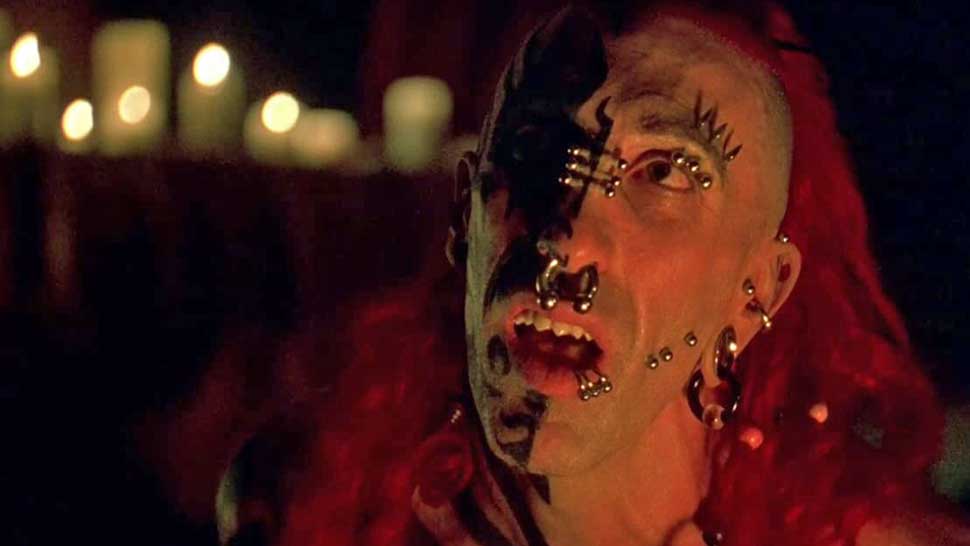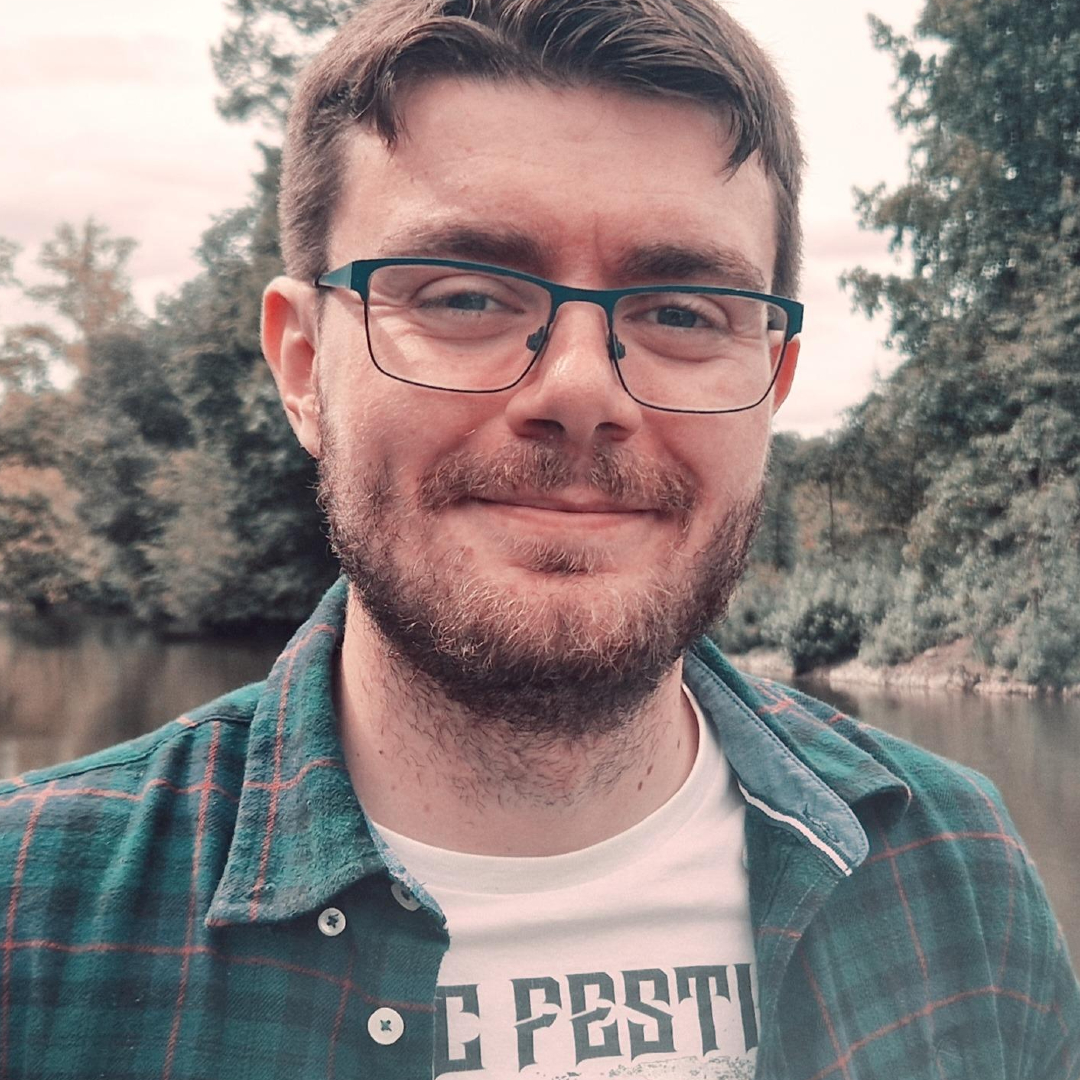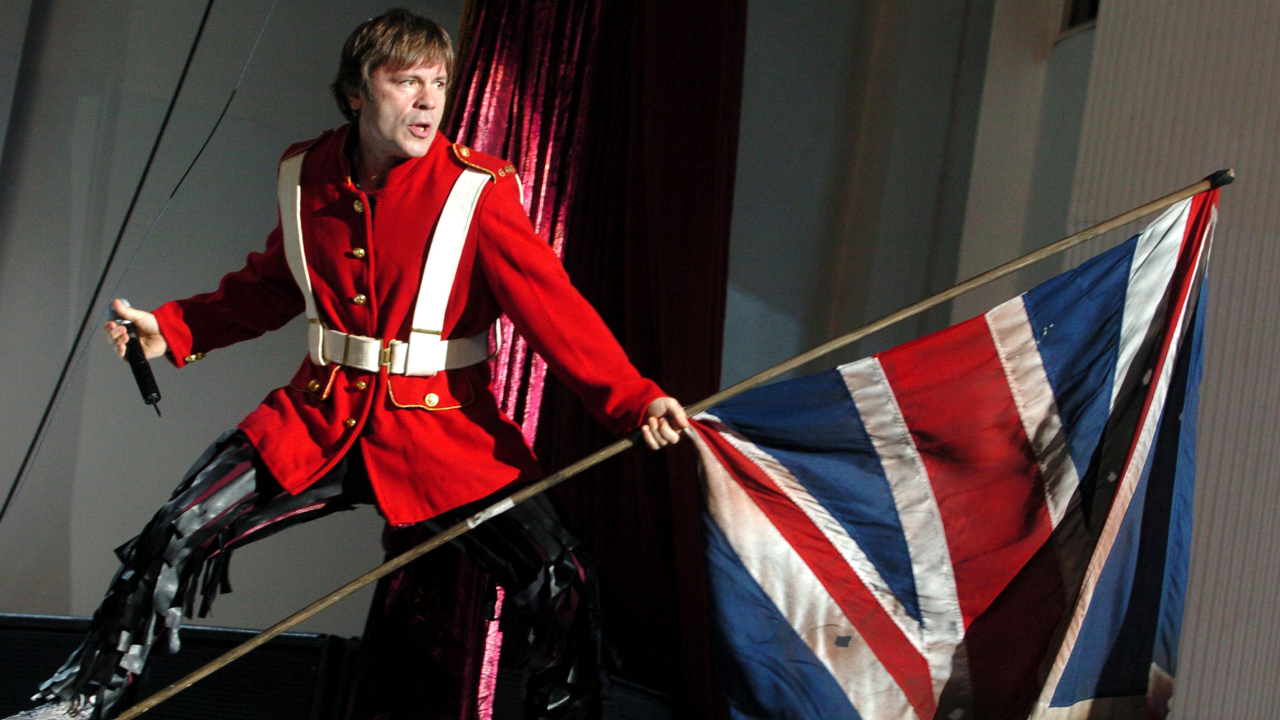How Dee Snider made horror’s most metal box office bomb
Despite starring Freddy Krueger, being soundtracked by System Of A Down and written by Dee Snider, Strangeland sank to the bottom of bargain bins. Why?

By 1995, Dee Snider was broke. The cash cow the singer rode to metal stardom, Twisted Sister, had broken up. Then his follow-up band called Widowmaker started and stopped in just three years because nobody gave a shit. So, the face-painted icon that once ruled MTV was suddenly frequenting thrift shops and commuting to a minimum-wage job on a pushbike to make ends meet.
Any money was good money. A look back at Dee’s mid-’90s CV is a scroll through countless what-the-fuck endeavours, from composing the theme of long-forgotten kids horror show The Terrible Thunderlizards to writing a Christmas song for Celine Dion (yes, really). Meanwhile, in the back of his mind the entire time, there was the backbone of what he thought would be his cinematic masterpiece: Strangeland.
Written by, produced by and starring Tipper Gore’s worst enemy himself, Strangeland came out in 1998 and could have been the most metal horror film of its decade. The soundtrack is crammed with the megastars of the day: Pantera, Soulfly, System Of A Down, Megadeth, Sevendust, Coal Chamber and Anthrax. Kid Rock collaborates with fucking Eminem on it!
Twisted Sister even rock up, having reunited after ten years apart to record Heroes Are Hard To Find, which blares over the end credits. On screen, the man beneath Freddy Krueger’s latex, Robert Englund, guest stars, while the leading lady is future Avengers, Scooby-Doo and Mad Men actress Linda Cardellini. So why does nobody talk about it?
Sadly, Strangeland is shit. Directed by John Pieplow (whose only other film credit is the 1996 schlockbuster Jurassic Women), it casts Dee as Captain Howdy: a half-tattooed, half-pierced murderer obsessed with ritualistic sadomasochism. When the lunatic abducts the daughter of a detective, he’s banged up and seemingly reformed, until furious townspeople seek some mob justice upon his release.
To Strangeland’s credit, the soundtrack fucking slays. It also has some interesting ideas on how to subvert the slasher genre. Imprisoning and rehabilitating the killer only for an unforgiving society to make him relapse into insanity evokes still-conscientious questions. Should prison seek to change people or punish them? Who gets to decide if and when justice has been served? And how far can a person go before they’re beyond forgiveness?
However, the film handles these questions with the deft of a baby juggling chainsaws. Howdy’s redemption and relapse could drive a TV series, yet get maybe fifteen minutes of screentime, sandwiched between first and third acts laden with serial killer cliches. Dee didn’t write himself decent dialogue and instead spews pseudo-philosophical rants, which, when combined with everybody else’s lack of personality, amounts to a cat-and-mouse narrative no one cares about. The most memorable performance comes from Robert Englund, but even then it’s due to the hilarity of the scene where he hornily dances on the back of his sofa.
Sign up below to get the latest from Classic Rock, plus exclusive special offers, direct to your inbox!
Plus, although Strangeland’s infatuation with the modern primitive – a subculture that believes in personal evolution through body modification – could be fascinating, all it does is make its villain a diet Pinhead that tortures with tattoos and needles. Then there are such subtler details as the score and cinematography, all of which are forgettable at best. Factor in a no-name director and the lack of any then-mainstream movie star and what’s left is an outing that couldn’t even recoup half of its shoestring $1.8 million budget.
So many of Strangeland’s issues boil down to the fact that Dee demanded a starring role and complete creative power, and would only let someone happy to give him those things sit in the director’s chair. After all, this was a personal passion project that went back fifteen years.
The movie’s a feature-length take on the Twisted Sister song Horror-Teria: the two-part centrepiece of the band’s biggest album, 1984’s Stay Hungry. The track’s about a serial killer also called Captain Howdy (named after the nickname that the main character of The Exorcist gives to her demon possessor), who lures “lovely little boys and girls” into his house and murders them. He dodges prison time on a technicality, then gets revenge-killed by townsfolk Freddy Krueger-style.
Dee originally wrote Horror-Teria in 1983. The plan was for its concept to be the heart of a rock opera, but he never found the time to finish it. Presumably, that’s because Twisted Sister were preoccupied with becoming one of the biggest heavy metal bands on the eastern seaboard. The singer returned to the idea in 1985, turning it into a slasher script called Helltown.
“It was a real derivative slasher film; it was really bad,” Dee said of Helltown in a 1998 IndieWire interview. “It was just completely hack. It took bites off of every other slasher movie.”
It wasn’t until 1994 – by which point Twisted Sister and Widowmaker had imploded, and Dee was looking down the barrel of bankruptcy – that Horror-Teria got revisited and reworked yet again. During this readaptation, Howdy became a tattoo and piercing addict, inspired by Dee’s late solo band guitarist Keith Alexander: the ex-Carnivore member adored body modification and has a “piercing consultant” credit in Strangeland. The plot device of Howdy using chat rooms to lure his victims was also added.
“I thought of this crap way before the first internet crime was committed,” Dee told IndieWire. “The minute I got online, I said, ‘Whoa. What the hell is this here? This is like a psychotic’s dream’ […] As soon as I saw that, I said, ‘This is how my guy finds his people.’”
From day one, Dee was desperate to play the Howdy part. “I have not wanted to be an actor [but] I have dreamed of being a horror icon,” he told Lollipop magazine in 1999. This – alongside the singer’s insistence that the film stay as close to his screenplay as possible, and his desire to curate the soundtrack – allegedly turned off all the prestigious studios and more expert directors that may have otherwise taken a punt at the project.

“My agent was like, ‘Yes. We’re gonna sell this for the big one,’” Dee said to IndieWire. “And I’m like, ‘I’ve got news for ya: I want to star in it and I want to co-produce it.’ And they were like, ‘Wait a minute, you haven’t done that. You’re gonna limit your opportunity, your options.’ I said, ‘I don’t care.’”
In the end, John Pieplow sought Dee out and was given the director job, and production company The Shooting Gallery threw $1.8 million at the film. According to Box Office Mojo, after thirteen weeks in US cinemas, Strangeland only grossed $713,000. Oh dear.
Strangeland does occupy its own little pocket of horror history though. It’s the first film the MPAA rated R for “torture scenes”, which Dee has proclaimed is a source of pride. He’s also, somewhat dubiously, declared that torture porn institutions Saw and Hostel “are children of Strangeland”: “Before that, there was no torture genre; everyone was still beating the dead horse [of Halloween],” the singer said to FlickDirect in 2009.
Dee allegedly spent a decade developing a sequel called Strangeland: Disciple, from 1999 through to the 2010s. However, The Shooting Gallery’s 2001 bankruptcy launched a years-long legal battle over the Strangeland name, and it seems no one else has shown interest in the IP. So, for now, the Strangeland franchise starts and ends in 1998, with a brutally soundtracked yet ultimately lacklustre horror that can’t build on the foundation of its own ideas.

Louder’s resident Gojira obsessive was still at uni when he joined the team in 2017. Since then, Matt’s become a regular in Metal Hammer and Prog, at his happiest when interviewing the most forward-thinking artists heavy music can muster. He’s got bylines in The Guardian, The Telegraph, The Independent, NME and many others, too. When he’s not writing, you’ll probably find him skydiving, scuba diving or coasteering.
